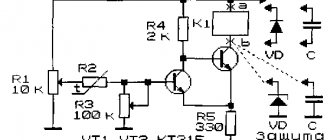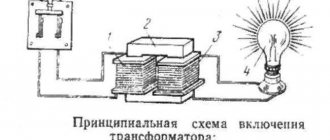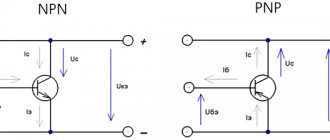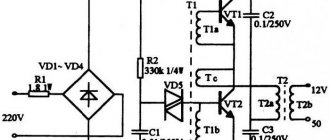SI unit for frequency
This article is about the unit of measurement. For other uses, see Hertz (disambiguation).
"Hz" and "Megahertz" are redirected here. For other uses, see Hz (disambiguation) and Megahertz (disambiguation).
| Hertz | |
| System of units | Derived SI unit |
| Unit | Frequency |
| Symbol | Hz |
| Named after | Heinrich Hertz |
| B SI Base Units | −1 |
From top to bottom: the indicators blink at frequencies w
= 0.5 Hz, 1.0 Hz and 2.0 Hz, that is, at a frequency of 0.5, 1.0 and 2.0 blinks per second, respectively.
The time between each flash - the period
T - is defined as 1⁄
f
(in reciprocal of
f
), that is, 2, 1 and 0.5 seconds, respectively. (Image edited and adjusted to symmetrical timing pulse using GIMP)
In hertz
(symbol:
Hz
) is the derived unit of frequency in the International System of Units (SI) and is defined as one cycle per second.[1] It is named after Heinrich Rudolf Hertz, the first person to provide conclusive evidence for the existence of electromagnetic waves. Hertz is usually expressed in multiples: kilohertz (103 Hz, kHz), megahertz (106 Hz, MHz), gigahertz (109 Hz, GHz), terahertz (1012 Hz, THz), petahertz (1015 Hz, pHz), exahertz (1018 Hz , Hz) and zettahertz (1021 Hz, Hz).
Some of the most common uses of the device are described as sine waves and musical tones, especially those used in radio and audio-related applications. It is also used to describe the clock speeds at which computers and other electronics operate. The units are sometimes also used as a representation of energy through the photon energy equation ( E
=
hour
ν), with one hertz equivalent to
an hour
joule.
Definition
Hertz is defined as one cycle per second. The International Committee of Weights and Measures defined the second as "the duration of 9,192,631,770 periods of radiation corresponding to the transition between two hyperfine levels of the ground state of the cesium-133 atom"[2][3] and then adds: "It follows that hyperfine splitting is mainly state of the cesium 133 atom is exactly 9,192,631,770 hertz, ν (hfs Cs) = 9,192,631,770 Hz." The unit unit hertz is 1/time (1/T). Expressed in basic SI units, it is 1/second (1/s). Problems can arise because angle units (cycle or radian) are omitted in the SI system.[4][5][6][7]
In English, "hertz" is also used in the plural.[8] In the SI system, the frequency Hz can be prefixed; Commonly used multiples are kHz (kilohertz, 103 Hz), MHz (megahertz, 106 Hz), GHz (gigahertz, 109 Hz), and THz (terahertz, 1012 Hz). One hertz simply means "one cycle per second" (usually a full cycle is counted); 100 Hz means "one hundred cycles per second", etc. The unit of measurement can be applied to any periodic event - for example, you can say that a clock ticks at 1 Hz, or you can say that the human heart beats at 1.2 Hz.
The occurrence rate of an aperiodic or stochastic event is expressed in a response second
or
reciprocal second
(1/s or s−1) in general or, in the particular case, radioactive decay, in becquerels.[9] Whereas 1 Hz is 1 cycle per second, 1 Bq is 1 aperiodic radionuclide event per second.
Although angular velocity, angular frequency, and all units of hertz have a unit of 1/s, angular velocity and angular frequency are not expressed in hertz,[10] but rather in the corresponding angular unit such as radian per second. Thus, a disk spinning at 60 revolutions per minute (rpm) is said to be spinning at 2π rad/s, or
1 Hz, where the former measures angular velocity and the latter reflects the number of
complete
revolutions per second.
The frequency conversion w
is measured in hertz, and the angular velocity
ω
is measured in radians per second this is
ω = 2 π f {displaystyle omega = 2pi f,} and f = ω 2 π {displaystyle f = {frac {omega} {2pi}}, } .
Hertz is named after Heinrich Hertz. As with every unit named after a person, its symbol begins with an uppercase letter (Hz), but when written fully follows the rules of capitalizing a common noun; those. « hertz
“becomes capitalized at the beginning of a sentence and in headings, but otherwise lowercase.
How does this affect the eyes?
Now you know what hertz is on TV and what they affect, it’s worth understanding the impact on health. It is not recommended to spend a long time in front of a screen with a storyboard less than 50 Hz. This causes headaches and eye fatigue. But it is almost impossible to find such models on sale. Modern technology has optimal parameters and is relatively safe for human health. At the same time, you should not watch even the most modern TV from a distance of less than one and a half meters.
Story
Hertz is named after the German physicist. Heinrich Hertz (1857–1894), who made important scientific contributions to the study of electromagnetism. The name was established by the International Electrotechnical Commission (IEC) in 1930.[11] It was adopted by the General Conference on Weights and Measures (CGPM) ( Conférence générale des poids et mesures
) in 1960, replacing the unit's former name,
cycles per second
(cps), along with associated multipliers, most notably
kilocycles per second
(kc/s) and
megacycles per second
(Ms/s), and sometimes
kilomegacycles per second
(km/s) With).
Period, the term cycles per second
was largely replaced by
the hertz
by the 1970s.
One hobby magazine, Electronics Illustrated
, has stated its intention to stick with the traditional units kc., mc. etc.[12]
What happens?
The minimum index is from 50 to 90, such displays will be the most inexpensive. You won’t be able to see every detail on the screen; moreover, during dynamic scenes, the image may become blurry, as if blurred. It will be uncomfortable to watch movies on such a TV, as you will have to constantly strain your eyes. In addition, flicker appears, which not only tires the organs of vision, but also harms their health.
The optimal level is considered to be 100-200; this is a modern Hertz class, and models with it are in great demand. They become sales leaders because they provide the optimal combination of quality and cost of the device. Presented in different price segments, they can be either average in price or quite expensive.
In some TVs, the index reaches 600, this is the maximum indicator, and devices with it are the most expensive. However, while watching it is difficult to find differences from the previous category.
When studying the characteristics, you should not confuse the index under discussion with the filming indicator. It equates to 24 frames per second, if translated into an index, it will be equivalent to only 50.
Applications
A sine wave with different frequencies
The heartbeat is an example of a non-sinusoidal periodic phenomenon that can be analyzed in terms of frequency. Two cycles are shown.
Vibration
Sound is a traveling longitudinal wave that represents an oscillation of pressure. People perceive the frequency of sound waves as pitch. Each musical note corresponds to a specific frequency, which can be measured in hertz. The baby's ear can perceive frequencies from 20 Hz to 20,000 Hz; The average adult can hear sounds from 20 Hz to 16,000 Hz.[13] The range of ultrasound, infrasound and other physical vibrations such as molecular and atomic vibrations extends from several femtohertz[14] to classified terahertz[15] and beyond.[16]
Electromagnetic radiation
Electromagnetic radiation is often described by its frequency—the number of times the perpendicular electric and magnetic fields oscillate per second—expressed in hertz.
RF exposure is usually measured in kilohertz (kHz), megahertz (MHz) or gigahertz (GHz). Light is electromagnetic radiation, which is even higher in frequency and has frequencies in the range of tens (infrared) to thousands (ultraviolet) terahertz. Electromagnetic radiation with frequencies in the low terahertz range (intermediate between the highest commonly used radio frequencies and long-wave infrared light) is often called terahertz radiation. There are even higher frequencies, such as gamma radiation, which can be measured in exahertz (EHz). (For historical reasons, the frequencies of light and higher-frequency electromagnetic radiation are usually defined in terms of their wavelengths, or photons of energy: for more on this and the above frequency ranges, see electromagnetic spectrum.)
Computers
More information on why frequency, including gigahertz (GHz), etc., is a false indicator of speed for computers: The Myth of Megahertz
In computers, most central processing units (CPUs) are designated by their clock speed, expressed in megahertz (106 Hz) or gigahertz (109 Hz). This specification refers to the frequency of the main processor. clock signal. This signal is a square wave, which represents an electrical voltage that periodically switches between low and high logic values. Since the hertz has become the primary unit of measurement adopted by the masses for determining processor performance, many experts have criticized this approach, which they claim is flawed. easy to administer test. Some processors use multiple clock periods to perform a single operation, while others can perform multiple operations in a single cycle.[17] For personal computers, CPU clock speeds ranged from about 1 MHz in the late 1970s (Atari, Commodore, Apple Computers) to 6 GHz in IBM POWER microprocessors.
Different computer buses, such as the front CPU connection bus and the Northbridge, also operate at different frequencies in the megahertz range.
The second to the minus first power is a unit of measurement of the frequency of discrete events
The frequency of discrete oscillations ($n$) is a physical quantity that is equal to the number of actions (events) per unit of time. If the time that one event takes is denoted as $\tau $, then the frequency of discrete events is equal to:
\[n=\frac{1}{\tau }\left(3\right).\]
From definition (3) it follows that the reciprocal second (second minus the first power) is a unit of measurement of the frequency of discrete events:
\[\left[n\right]=\frac{1}{s}.\]
A second to the minus first power is equal to the frequency of discrete events if one event occurs in a time equal to one second.
Multiples of SI
SI, multiples of hertz (Hz)
| Subsets | Multiples | |||||
| Value | Symbol SI | Name | Value | Symbol SI | Name | |
| 10−1 Hz | dHz | decihertz | 101 Hz | dHz | dekahertz | |
| 10−2 Hz | cHz | centihertz | 102 Hz | Hz | hectohertz | |
| 10−3 Hz | MHz | millihertz | 103 Hz | kHz | kHz | |
| 10−6 Hz | µHz | microhertz | 106 Hz | MHz | megahertz | |
| 10−9 Hz | nHz | nanohertz | 109 Hz | GHz | gigahertz | |
| 10−12 Hz | pgc | picohertz | 1012 Hz | THz | terahertz | |
| 10−15 Hz | fHz | femtohertz | 1015 Hz | PHz | petahertz | |
| 10−18 Hz | aHz | attohertz | 1018 Hz | EHz | exahertz | |
| 10−21 Hz | zHz | zeptohertz | 1021 Hz | ZHz | zettahertz | |
| 10−24 Hz | yHz | yoctohertz | 1024 Hz | YHz | yottahertz | |
| Common prefixed units are shown in bold. | ||||||
Higher frequencies than the International System of Units provide prefixes that are believed to occur naturally in the frequencies of quantum mechanical oscillations of high-energy or, equivalently, massive particles, although they are not directly observed and must be inferred from their interactions with others phenomena. By convention, they are usually expressed not in hertz, but in units of equivalent quantum energy, which is proportional to the frequency by a factor. Planck's constant.
| Hertz: Unicode characters.[18] | ||
| Symbol | Name | Unicode number |
| ㎐ | Hertz (square Hz) | U+3390 |
| ㎑ | Kilohertz (Square, KHz) | U+3391 |
| ㎒ | Megahertz (square MHz) | U+3392 |
| ㎓ | Gigahertz (Square GHz) | U+3393 |
| ㎔ | Terahertz (square THZ) | U+3394 |
Notes and links
- "hertz". (1992). American Heritage Dictionary of the English Language
(3rd ed.), Boston: Houghton Mifflin. - "SI Brochure: Table 3. Associated derived SI units with special names and symbols."
- "[Regulations] CIPM, 1964 - Atomic and Molecular Frequency Standards" (PDF). SI Brochure Appendix 1.
- Mohr, J.C.; Phillips, W. D. (2015). "Dimensionless units in SI". Metrology
.
52
(1): 40–47. arXiv:1409.2794. Bibcode:2015Metro..52 … 40M. Doi:10.1088/0026-1394/52/1/40. - Mills, I. M. (2016). "In units of radians and cycle for plane angle quantities." Metrology
.
53
(3):991–997. Bibcode:2016Metro..53..991M. Doi:10.1088/0026-1394/53/3/991. - “SI units need to be reformed to avoid confusion.” From the editor. Nature
.
548
(7666): 135. August 7, 2011. doi:10.1038/548135b. PMID 28796224. - P. R. Bunker; I. M. Mills; Per Jensen (2019). "Planck's constant and its units." J Quant Spectrosc Radiat Transfer
.
237
: 106594. Bibcode:2019JQSRT.23706594B. doi:10.1016/j.jqsrt.2019.106594. - NIST Guide to SI Units - 9 Rules and Styles for Writing Unit Names, National Institute of Standards and Technology
- “(d) Hertz is used only for periodic phenomena, and becquerel (Bq) is used only for random processes in activity related to a radionuclide.” "BIPM - Table 3". BIPM. Retrieved October 24, 2012.
- "SI Brochure, Section 2.2.2, Paragraph 6." Archived from the original on October 1, 2009.
- "History of the ICC". Iec.ch. September 15, 1904. Retrieved April 28, 2012.
- Cartwright, Rufus (March 1967). Beeson, Robert G. (ed.). “Will success spoil Heinrich Hertz?” (PDF). Electronics illustrated
. Fawcett Publications, Inc., pp. 98–99. - Ernst Terhardt (20 February 2000). "Dominant region of the spectrum." Mmk.e-technik.tu-muenchen.de. Archived from the original on April 26, 2012. Retrieved April 28, 2012.
- "Sound Waves in a Black Hole - Science Mission Directorate." science.nasa.go.
- Atomic vibrations are usually on the order of tens of terahertz
- "Sound Waves in a Black Hole - Science Mission Directorate." science.nasa.go.
- Asaravala, Amit (30 March 2004). "Good dance, Gigahertz." Wired
. Retrieved April 28, 2012. - Unicode Consortium (2019). "Unicode Standard 12.0 - Compatible with CJK Range: 3300–33FF ❱" (PDF). Unicode.org
. Retrieved May 24, 2022.











